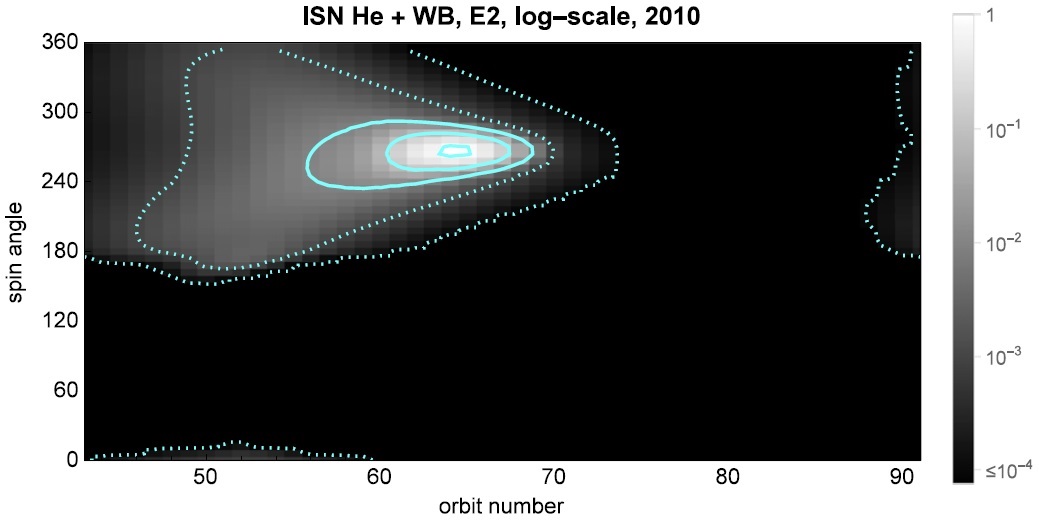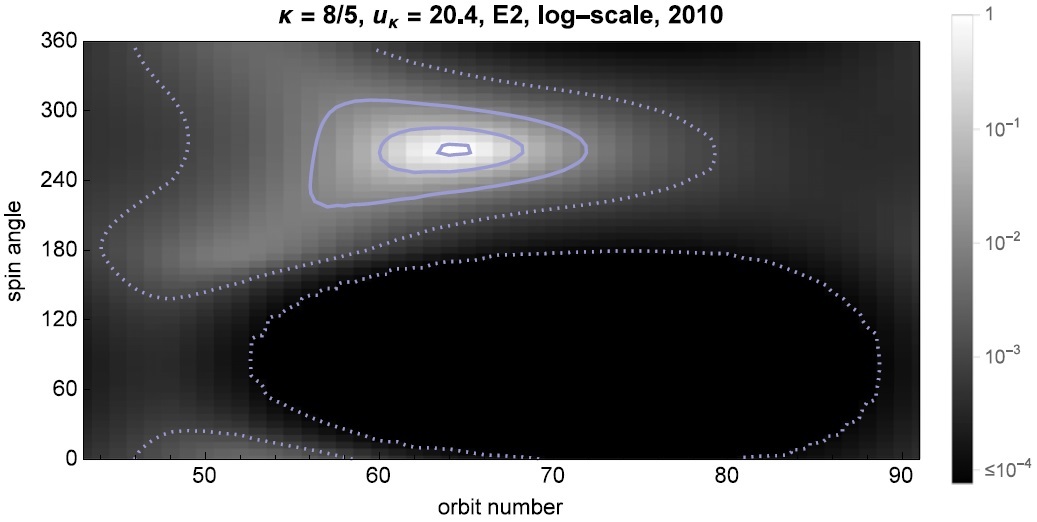
by Sokol et al.
Abstract:Neutral interstellar helium has been observed by the Interstellar Boundary Explorer (IBEX) since 2009 with a signal-to-noise ratio well above 1000. Because of the geometry of the observations, the signal observed from January to March each year is the easiest to identify. However, as we show via simulations, the portion of the signal in the range of intensities from 10−3 to 10−2 of the peak value, previously mostly left out from the analysis, may bring important information about the details of the distribution function of interstellar He gas in front of the heliosphere. In particular, these observations may inform us about possible departures of the parent interstellar He population from equilibrium. We compare the expected distribution of the signal for the canonical assumption of a single Maxwell–Boltzmann population with the distributions for a superposition of the Maxwell–Boltzmann primary population and the recently discovered Warm Breeze, and for a single primary population given by a kappa function. We identify the regions on the sky where the differences between those cases are expected to be the most visible against the background. We discuss the diagnostic potential of the fall peak of the interstellar signal, reduced by a factor of 50 due to the Compton–Getting effect but still above the detection limit of IBEX. We point out the strong energy dependence of the fall signal and suggest that searching for this signal in the data could bring an independent assessment of the low-energy measurement threshold of the IBEX-Lo sensor.

